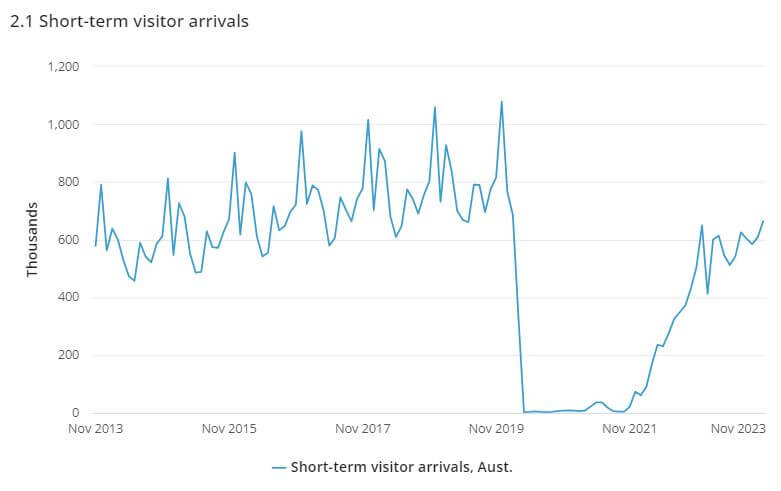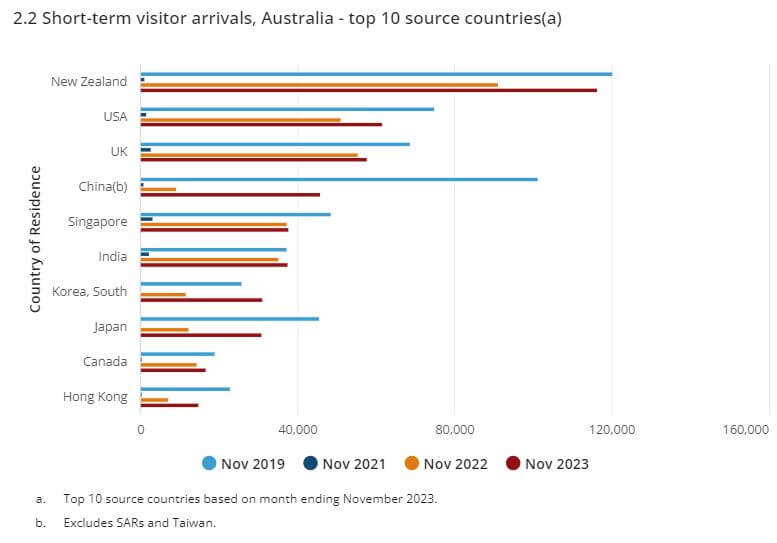The Mandarin-lettered tour buses around Sydney Harbour were once a common sight for Sydneysiders. In the 2018-19 financial year, China was the number one source of short-term visits to Australia – surpassing even New Zealand – and group tours were a popular way for Chinese tourists to visit.
Yet recent tourism numbers show this remains far from the case at the start of 2024. The reason why says a lot about China’s orientation to the rest of the world.
China reopened its outbound tourism in February 2023. However, it chose to approve group tours to a select group of 20 countries, which included New Zealand, South-East Asian countries, and geopolitically aligned countries further afield (e.g. Russia, South Africa, Cuba, Argentina). It added 40 further countries in March, but did not approve travel to Australia until an expanded list of countries was published in August, which also included the US, UK, Japan and South Korea.
It’s not yet clear how much this CCP push for Chinese citizens to look elsewhere will affect the actual tourist numbers. But it seems that in tourism, as in so many areas, China’s policy is not so much carrot-or-stick as it is carrot-or-no-carrot.


Some analysts suggest that as Chinese tourists have become accustomed to travelling within China since 2020, that trend may continue even with open international borders. Domestic destinations like Lhasa, Shantou and Haikou are seeing more tourists than ever before.
This means it isn’t just Australia being affected either. The no-carrot tourism policy has led to much reduced numbers of visitors to other US-aligned countries.
There are far fewer direct air routes between China and Australia, France, the US, Japan and South Korea than there were before 2020. By contrast, China is now operating more routes to Middle Eastern countries – with direct flights added to Cairo, Abu Dhabi and Riyadh – than they were before COVID.
Again, how much the Chinese government is able to redirect its citizens’ behaviour remains to be seen. But tourist businesses holding out for a swift return to the pre-pandemic norm better not be holding their breath.
Feature image courtesy of @danfreemanphoto via Unsplash.
Sign Up To Our Free Newsletter